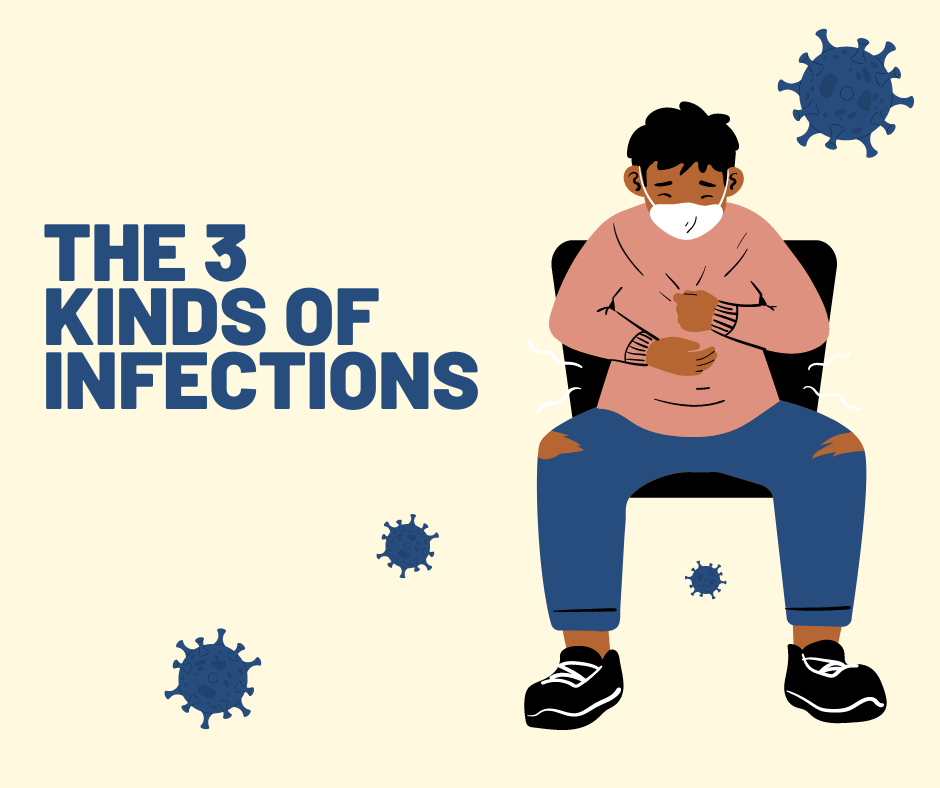
Bacterial, viral, and parasitical infections are three types of infections that can cause illness in humans. While they can have similar symptoms, they differ in how they are transmitted, treated, and prevented. Here is an overview of the differences between bacterial, viral, and parasitical infections:
Bacterial Infections
What are Bacterial Infections?
Bacterial infections are caused by bacteria, which are single-celled microorganisms that can live in various environments, including the human body. Bacterial infections can be transmitted through direct contact with an infected person or object, contaminated food or water, or insect bites. Common bacterial infections include strep throat, urinary tract infections, and pneumonia.
What are the Symptoms of Bacterial Infections?
Symptoms of bacterial infections can vary, depending on the specific type of bacteria and the location of the infection. They may include fever, pain, swelling, redness, and discharge. Treatment for bacterial infections typically involves antibiotics, which are medications that can kill or slow the growth of bacteria. It is important to complete the full course of antibiotics as prescribed by a doctor, even if symptoms improve, to prevent the bacteria from developing resistance to the medication.
Viral Infections
What are Viral Infections?
Viral infections are caused by viruses, which are tiny infectious agents that can only reproduce inside living cells. Viruses can be transmitted through contact with an infected person’s bodily fluids, through the air when an infected person sneezes or coughs, or through contact with contaminated objects. Common viral infections include the common cold, flu, and chickenpox.
What are the Symptoms of Viral Infections?
Symptoms of viral infections can include fever, cough, sore throat, muscle aches, and fatigue. Treatment for viral infections typically involves managing symptoms with rest, hydration, and over-the-counter medications. In some cases, antiviral medications may be prescribed, which can help slow the growth and spread of the virus.
Parasitical Infections
What are Parasitical Infections?
Parasitical infections are caused by parasites, which are organisms that live in or on another organism and feed off of it. Parasites can be transmitted through contaminated food or water, contact with infected feces or soil, or insect bites. Common parasitical infections include malaria, giardiasis, and trichomoniasis.
Symptoms of parasitical infections can vary, depending on the specific parasite and the location of the infection. They may include diarrhea, abdominal pain, fever, and weight loss. Treatment for parasitical infections typically involves medications that can kill or slow the growth of the parasite, as well as managing symptoms with rest, hydration, and dietary changes.
How Do You Prevent Any Kind of Infection?
Preventing bacterial, viral, and parasitical infections involves practicing good hygiene, such as washing your hands regularly, covering your mouth when coughing or sneezing, and avoiding contact with infected individuals or contaminated objects. Vaccines are also available for certain bacterial and viral infections, such as measles, mumps, rubella, and pneumonia, and can help prevent the spread of these infections.
Conclusion
In conclusion, while bacterial, viral, and parasitical infections can have similar symptoms, they differ in their causes, transmission, and treatment. Understanding the differences between these types of infections can help individuals take the necessary steps to prevent, diagnose, and treat infections, and ultimately maintain good health.



